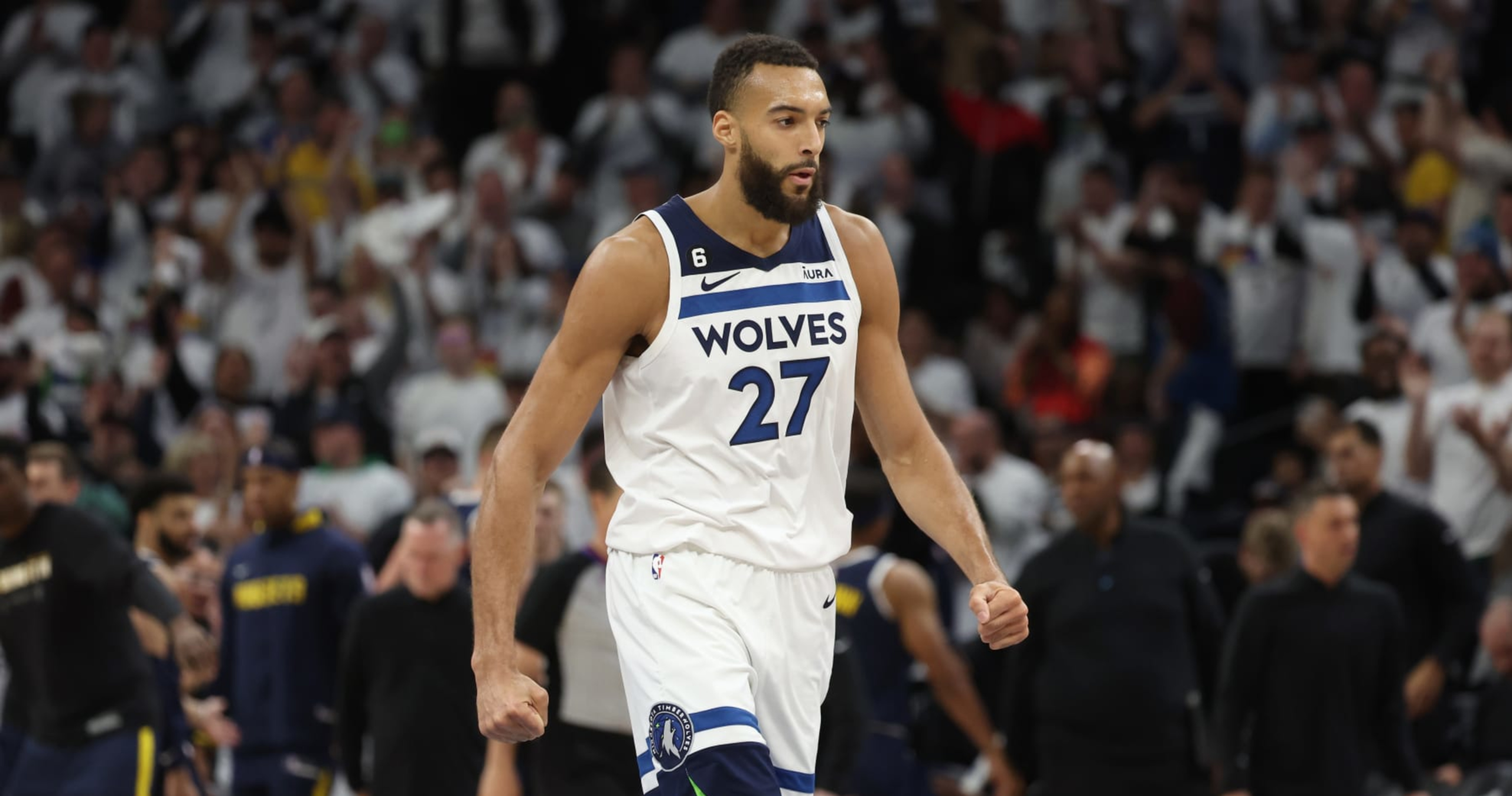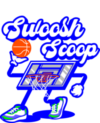Sports
The 5 Worst NBA Trades of the Last 5 Years – Bleacher Report

Plenty of NBA front offices have been panned for big trades over the years, but the last half-decade has seen some particularly regrettable deals.
To determine the worst, we took to NBA Twitter (X?) for a general survey, and the responses and quotes delivered.
From there, narrowing it down required us to look at the number of prospects and assets that went one way or the other, how the centerpiece players performed before and after the deal, and team success for all involved.
This exercise also calls for a ton of subjectivity, though. The long-term effects of certain trades in the last five years can’t be known yet. The Rudy Gobert deal from 2022 seemed outrageous in the moment, and his first season there felt like a year-long adjustment period, but the outlook could change as early as 2023-24.
One technicality before we dive in, though. Our time period is exactly what the headline says. Five years, not five seasons. We’re just looking at deals from August 2018 on.
Not that it would’ve made the list anyway, but the Luka Dončić-Trae Young deal is off the board because it happened in June 2018. All of the following head-scratchers did take place over the past half-decade, though.
This was a five-team blockbuster that included the Washington Wizards, Los Angeles Lakers, Brooklyn Nets, Indiana Pacers and San Antonio Spurs. You can find the details here.
We’re just focusing on what the Lakers gave and received. Ten months after winning an NBA title with Kentavious Caldwell-Pope and Kyle Kuzma in the rotation, L.A. sent them to Washington as part of this five-teamer that netted them Russell Westbrook.
This deal had plenty of skeptics right from the start, and for good reason. The Lakers won a title by surrounding LeBron James and Anthony Davis with grit, shooting and players who understood the importance of deferring to those two.
Anyone should’ve been able to predict that deference would’ve been a little tougher for Westbrook. Both he and LeBron had spent the entirety of their Hall of Fame careers on the ball, and neither was a consistent enough shooter to make sense as the off-ball guy.
The results were predictably bad. In a season and change, the Lakers were minus-3.3 points per 100 possessions with Russ on the floor and plus-0.2 without him.
Meanwhile, Kuzma has averaged 19.1 points, 7.9 rebounds and 3.6 assists in his two seasons with Washington. He just signed a multi-year extension with the Wizards and is almost seven years younger than Westbrook, who isn’t even on the Lakers anymore.
KCP’s three-and-D dynamism helped the 2020 Lakers win a title. He did the same thing with the Denver Nuggets this past season.
After making the Western Conference Finals last year, L.A. appears to be back on track, but this trade forced an unnecessary and painful detour.
The details on this deal are nowhere as complicated as the last one, so we’ll quote them from Basketball Reference here:
“The Chicago Bulls traded Wendell Carter Jr., Otto Porter, a 2021 1st round draft pick (Franz Wagner was later selected) and a 2023 1st round draft pick (Jett Howard was later selected) to the Orlando Magic for Al-Farouq Aminu and Nikola Vučević. Orlando also received a trade exception 2021 1st-rd pick (CHI own) was top-4 protected 2023 1st-rd pick is CHI own”
Oof.
Nikola Vučević is still good. The Bulls just signed him to a three-year, $60 million extension, which isn’t egregious. But Chicago fans can’t be thrilled about the players whom the team gave up in this deal.
Vučević has piled up more wins over replacement player than Carter since the trade, but plenty of teams would prefer the Magic center at this point. He’s almost nine years younger than Vučević, still has potential to develop into a bona fide defensive anchor and has averaged 14.6 points, 9.5 rebounds and 2.4 assists per game with Orlando.
What really makes this sting, though, is the fact that one of the picks Chicago surrendered turned into Franz Wagner. He’ll almost certainly contend for more All-Star appearances than Vučević going forward, as he turns only 22 in late August and is coming off a sophomore campaign in which he put up 18.6 points, 4.1 rebounds and 3.5 assists per game.
The Bulls, meanwhile, made a win-now move that has done little more than lock them into mediocrity. During his time in Chicago, they’re minus-1.7 points per 100 possessions with Vučević on the floor and plus-4.1 without him.
The Brooklyn Nets and Philadelphia 76ers somehow both lost this trade.
After an ugly postseason exit at the hands of the Atlanta Hawks—the series in which Ben Simmons had three fourth-quarter field-goal attempts over the entire seven-game series—and a public holdout to start the 2021-22 campaign, the Sixers dealt Simmons to the Brooklyn Nets for James Harden.
The rest of the details can be found below:
“The Brooklyn Nets traded James Harden and Paul Millsap to the Philadelphia 76ers for Seth Curry, Andre Drummond, Ben Simmons, a 2023 1st round draft pick (Brice Sensabaugh was later selected) and a 2027 1st round draft pick ( was later selected). Philadelphia also received a trade exception 2023 1st-rd pick was originally a 2022 pick that was deferred 2027 1st-rd pick is top-8 protected and could turn into cash in 2029”
The downsides of this trade are pretty obvious for both teams.
Simmons never returned to the floor in 2021-22, and he managed only 42 appearances last season. He looked like a shell of his three-time All-Star self upon his return, as he averaged only 6.9 points, 6.3 rebounds and 6.1 assists per game.
Those numbers might be fairly intriguing for plenty of players thanks to the rebounds and assists, but not for someone with Simmons’ growing list of health concerns and prior production. If this is his expected output going forward, having him as the centerpiece of a deal that cost you a perennial 20-and-10 guy is bad.
It’s easy to spin this negatively for Philadelphia, too. The Sixers gave up two future first-round picks for a player who hasn’t gotten them any closer to a title and is already demanding out and publicly calling president of basketball operations Daryl Morey a liar after just a year-and-a-half.
This most recent news on that front sounds dire. “Even with the Sixers ending trade talks on James Harden, the disgruntled star still has no plans on playing for Philly and his stance remains unchanged,” The Athletic’s Sam Amick wrote Saturday.
If two second-round exists is all Harden delivers the Sixers, their fans are going to be disappointed, especially if the Sacramento Kings were ever open to moving Tyrese Haliburton for Simmons.
If Daryl Morey somehow uses Harden’s latest trade request to get the Sixers closer to a championship, the calculus on this deal would look different. But right now, it’s bad.
Two appearances each for Westbrook on this list is rough.
He might have been spared by the potential inclusion of the Los Angeles Clippers’ trade for Paul George that cost them Shai Gilgeous-Alexander and multiple draft picks (one of which turned into Jalen Williams), but you can still see the logic of that one in hindsight.
If acquiring George was the only way to get Kawhi Leonard to sign with them in free agency, the Clippers almost certainly had to do it. Injuries were foreseeable with those two, but taking that risk isn’t hard to wrap your head around.
Reuniting Westbrook with Harden, on the other hand, is. The details on that move are below:
“The Houston Rockets traded Chris Paul, a 2021 1st round draft pick, a 2024 1st round draft pick, a 2025 1st round draft pick and a 2026 1st round draft pick to the Oklahoma City Thunder for Russell Westbrook. 2024 pick is top-4 protected 2026 pick is top-4 protected, becomes $1MM and 2026 second-round pick 2021 1st-rd pick is right to swap, top-4 protected, did not convey 2025 1st-rd pick is right to swap with HOU, top-20 protected”
Yes, Westbrook and Harden had some success with each other on the Oklahoma City Thunder, but Harden was an entirely different player at that point. His usage percentage in OKC was 20.4. It was 40.5 in the season immediately prior to Westbrook’s arrival in Houston and 34.8 over the five seasons leading up to that.
The idea that one or both might be able to sacrifice enough to win a championship seems almost ludicrous in hindsight. Although then-head coach Mike D’Antoni eventually pulled a rabbit out of the hat by basically playing Westbrook as a point center, this Houston team never felt like a threat to the true contenders.
Meanwhile, after helping the Rockets give the Golden State Warriors two of their more challenging series of the Lightyears Ahead era, CP3 had almost twice as many wins over replacement player for the Thunder as Westbrook had for Houston.
When you add the fact that Houston was the team that surrendered multiple first-round picks in this deal, it starts to look nightmarish.
This trade is still fresh enough that the Minnesota Timberwolves can reasonably hope for it to become palatable. The Wolves looked solid with Gobert patrolling the paint at times last season, and reigning champion Bruce Brown described Minnesota as the Denver Nuggets’ toughest playoff opponent in 2023.
But Gobert is 31 years old and has a $46.7 million player option for the 2025-26. Opponents also outscored the Wolves when he was on the floor in 2022-23.
All of that is tough to reconcile with this massive trade package:
“The Minnesota Timberwolves traded Malik Beasley, Patrick Beverley, Leandro Bolmaro, Walker Kessler, Jarred Vanderbilt, a 2023 1st round draft pick (Keyonte George was later selected), a 2025 1st round draft pick ( was later selected), a 2026 1st round draft pick ( was later selected), a 2027 1st round draft pick ( was later selected) and a 2029 1st round draft pick ( was later selected) to the Utah Jazz for Rudy Gobert. Minnesota also received a trade exception Utah also received a trade exception 2025 1st-rd pick is MIN own 2026 1st-rd pick is a right to swap 2027 1st-rd pick is MIN own conditional 2029 1st-rd pick is MIN own”
Beasley, Beverley and Vanderbilt could all be in playoff rotations next season. Kessler is almost a decade younger than Gobert and topped him last season in defensive estimated plus-minus, one of the most trusted catch-all metrics by NBA front offices. And who knows what all of those picks could turn into.
There’s technically still time for Minnesota to turn this trade around, but it’ll be facing an uphill climb after doing so. As Gobert ages out of his prime and moves deeper into an era that prioritizes bigs with skills he doesn’t have (like shooting and playmaking), the details on that trade almost demand that he make the Timberwolves a title contender.
That feels beyond optimistic.









